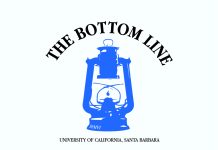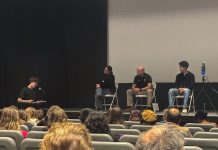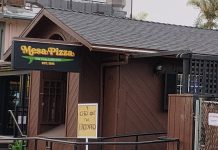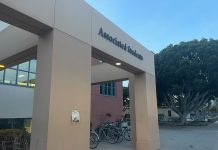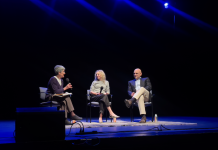Ariana Trelles-Duckett
Copy Editor & Contributing Writer
Identifying Gingko Trees
Trees with fan-shaped leaves can be seen at a variety of locations around the UC Santa Barbara (UCSB) campus — such as by the sidewalk in front of the Performing Arts building and around the back of South Hall. At this time of year, these trees’ orange-yellow leaves scatter the pavement and surrounding grass until the weather warms up again. The scientific name of these unique and endangered trees is Ginkgo biloba.
Gingko trees have a pyramidal shape — a wide base of branches which increasingly shrinks farther from the ground — and deep roots that make them resistant to high winds.
They produce both fruits and nuts, but are difficult to consume safely. The fruits, produced by female trees, have a strong odor and toxic compounds. The nuts’ outer layer can be poisonous but also contain some starch and protein. They also have medicinal properties which contribute to their endangered status, and some research shows that Ginkgo’s nuts can treat coughs, asthma, skin infections, and more.
The History of the Ginkgos
Ginkgos primarily grow in public spaces, as opposed to the wild, due to continuous deforestation. Though endangered, Ginkgos have been cultivated to grow in a variety of colors today. Those throughout Santa Barbara County are gold-colored, but gingko leaves grow green, striped, and can even develop a white rim and green center (these are snow cloud gingkos).
Gingkos’ ancestors date to the Permian, a period of time between 298 million and 251 million years ago. Even so, fossilized Ginkgo leaves from millions of years ago resemble modern ones closely. They’re the only living member of Ginkgoales, an order of gymnosperms (non-flowering plants), making them what is called a living fossil. This is another factor of their endangered status given that no other genera in their order are alive today.
Outside of the UCSB campus, Ginkgos can be found on a variety of streets and landscapes throughout the city of Santa Barbara.
The Ethics of Planting Ginkgo Trees
Alongside their resistance to insects, fungus, and strong winds, Ginkgo trees can withstand air pollution and harsh weather conditions. These traits allow them to thrive across the world in addition to the California coast. Some research even indicates that climate change will not heavily impact Ginkgos.
Their ecological resistance has appeal, and they are good at storing carbon, but the trees cannot simply grow wherever there is space. Local ecosystems must be taken into consideration. Many plant species grow far from where they originate. When humans introduce plant species to new environments or a component of the plant’s ecosystem changes, such as a shifting climate, plants tend to migrate to more suitable conditions. This affects local ecosystems in a variety of ways. For example, introducing non-native plants to an ecosystem can cause competition for resources, such as access to water and sunlight, and affect how much nutrients native plants receive.
It’s important to note that not all non-native plants are invasive, including Ginkgos. However, they are not flowering plants, or angiosperms, so they do not attract pollinators, affecting the amount of available nutrients to pollinators in areas where they are planted or thrive. Studies have shown that Ginkgos could start to move north as the Earth’s climate changes due to global warming.
Interspersed throughout our campus, Ginkgos’ fan-shaped leaves hold a distinct history of resilience, migration, and survival. They grew through millions of years of changing climates yet have remained the same shape and size. Far from their place of origin and few in number, climate scientists — and at least one UCSB student in the Science & Tech section of The Bottom Line — continue to enjoy learning about them.
